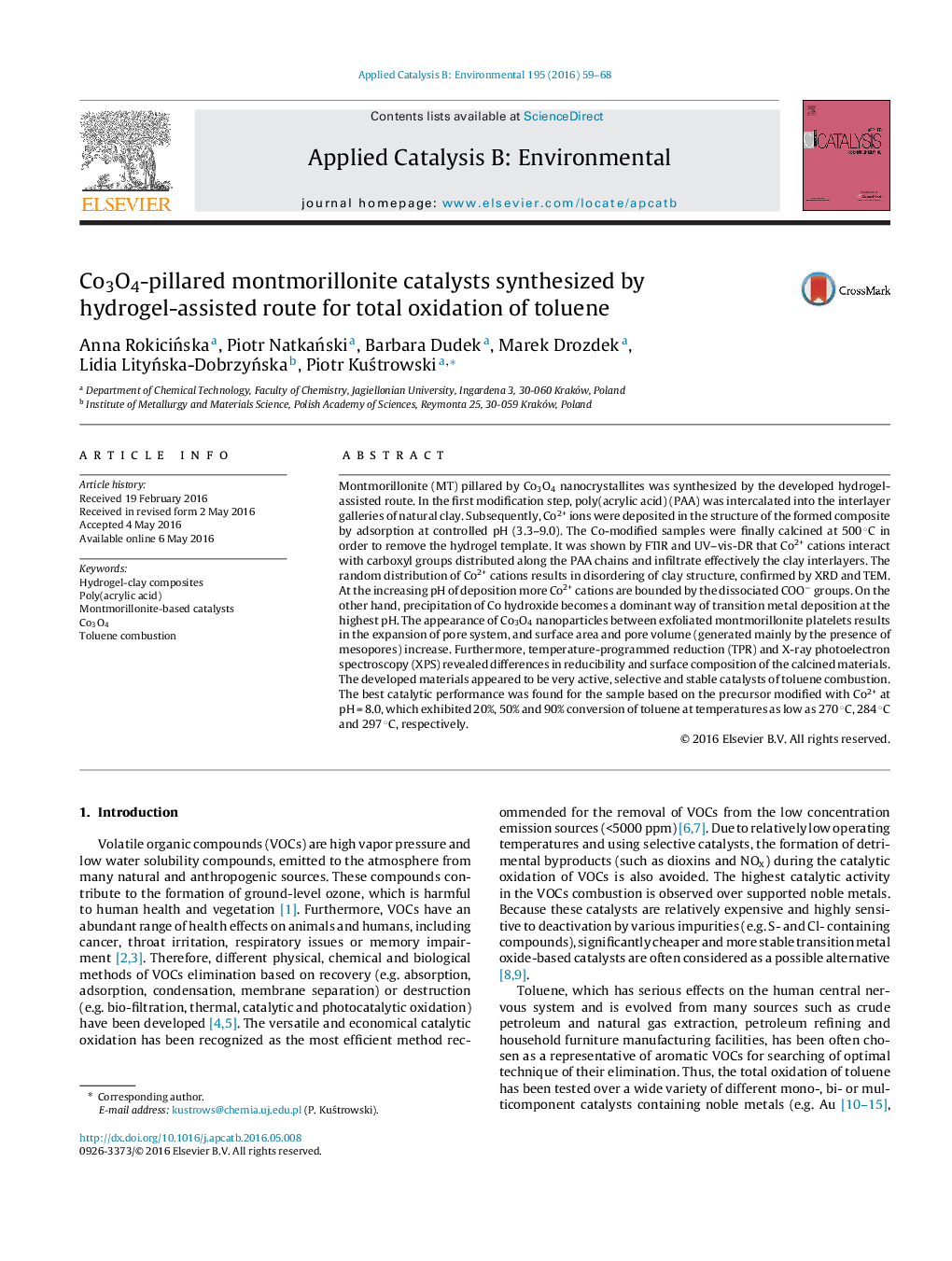| کد مقاله | کد نشریه | سال انتشار | مقاله انگلیسی | نسخه تمام متن |
|---|---|---|---|---|
| 44769 | 46347 | 2016 | 10 صفحه PDF | دانلود رایگان |

• Co2+ cations were deposited in montmorillonite-poly(acrylic acid) composite.
• Co3O4 particles highly dispersed on delaminated clay were formed by calcination.
• Amount and dispersion of Co3O4 was controlled by pH used during modification.
• High dispersion of Co3O4 species resulted in their enhanced reducibility.
• Co3O4-pillared clay catalysts were very active in toluene combustion.
Montmorillonite (MT) pillared by Co3O4 nanocrystallites was synthesized by the developed hydrogel-assisted route. In the first modification step, poly(acrylic acid) (PAA) was intercalated into the interlayer galleries of natural clay. Subsequently, Co2+ ions were deposited in the structure of the formed composite by adsorption at controlled pH (3.3–9.0). The Co-modified samples were finally calcined at 500 °C in order to remove the hydrogel template. It was shown by FTIR and UV–vis-DR that Co2+ cations interact with carboxyl groups distributed along the PAA chains and infiltrate effectively the clay interlayers. The random distribution of Co2+ cations results in disordering of clay structure, confirmed by XRD and TEM. At the increasing pH of deposition more Co2+ cations are bounded by the dissociated COO− groups. On the other hand, precipitation of Co hydroxide becomes a dominant way of transition metal deposition at the highest pH. The appearance of Co3O4 nanoparticles between exfoliated montmorillonite platelets results in the expansion of pore system, and surface area and pore volume (generated mainly by the presence of mesopores) increase. Furthermore, temperature-programmed reduction (TPR) and X-ray photoelectron spectroscopy (XPS) revealed differences in reducibility and surface composition of the calcined materials. The developed materials appeared to be very active, selective and stable catalysts of toluene combustion. The best catalytic performance was found for the sample based on the precursor modified with Co2+ at pH = 8.0, which exhibited 20%, 50% and 90% conversion of toluene at temperatures as low as 270 °C, 284 °C and 297 °C, respectively.
Figure optionsDownload as PowerPoint slide
Journal: Applied Catalysis B: Environmental - Volume 195, 15 October 2016, Pages 59–68